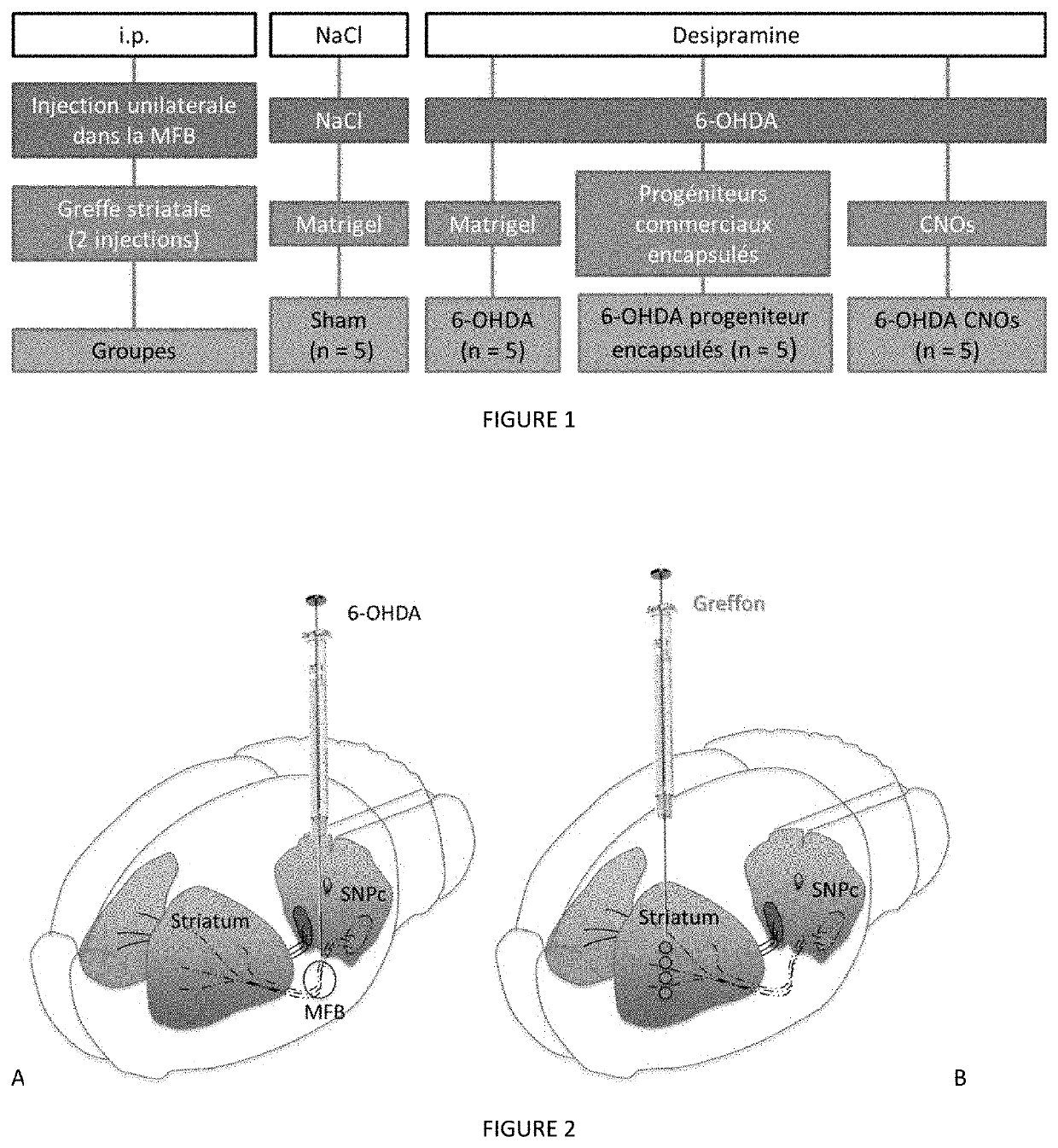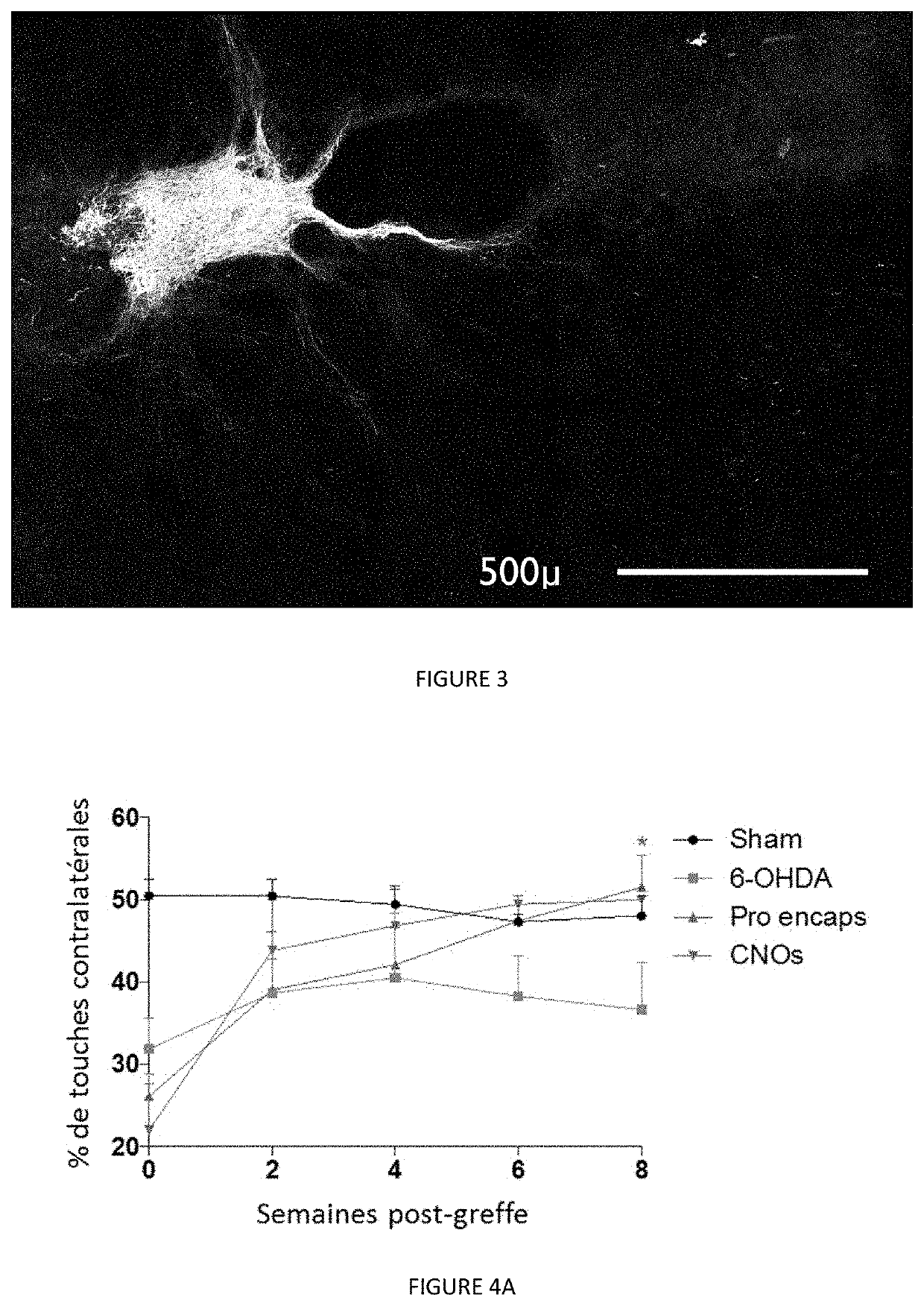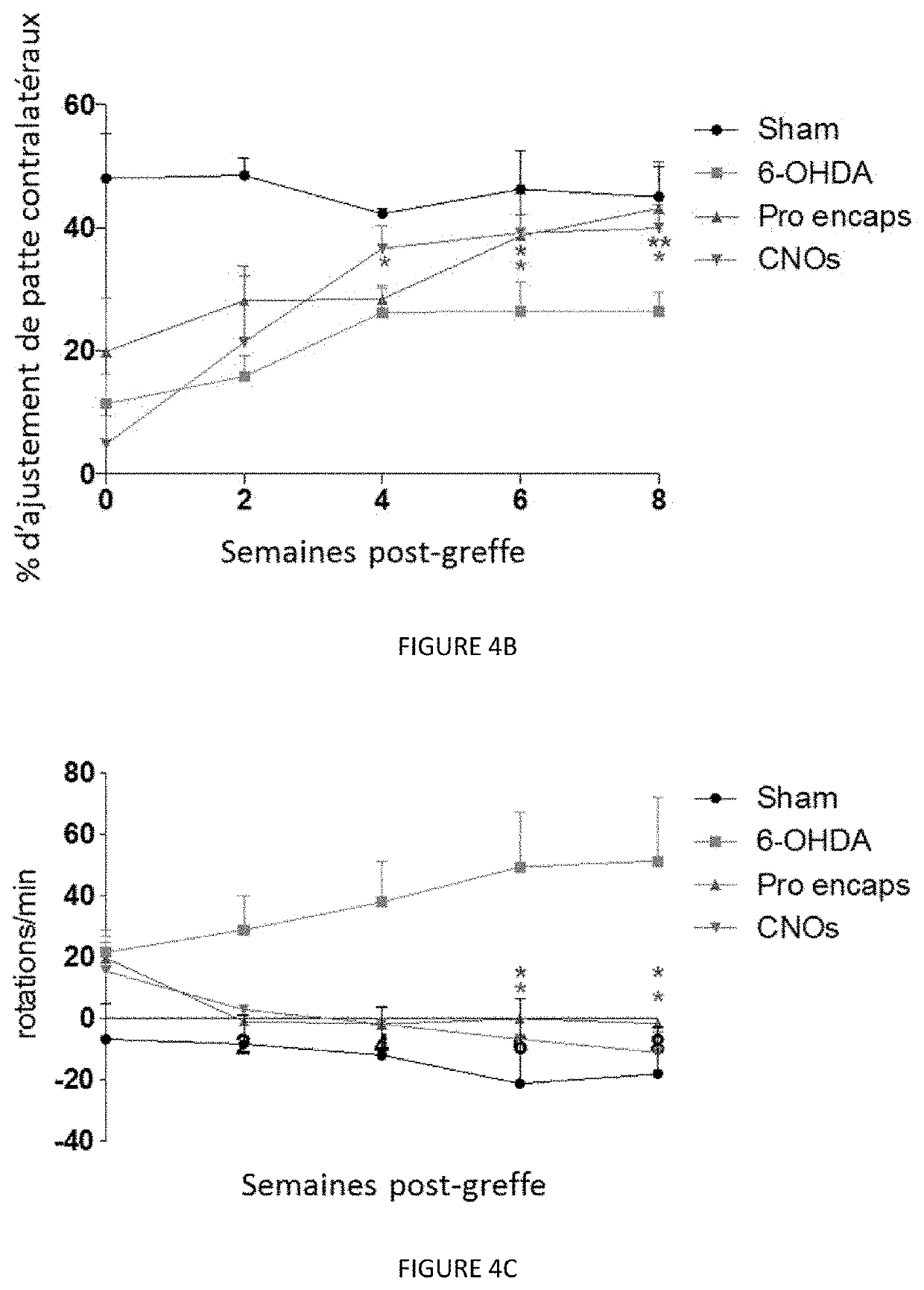Neural tissue unit and use of such a unit for implantation into the nervous system of a mammal
- Summary
- Abstract
- Description
- Claims
- Application Information
AI Technical Summary
Benefits of technology
Problems solved by technology
Method used
Image
Examples
examples
1. Production of Implantable Neural Tissue Units for the Treatment of Parkinson's Disease
[0088]Progenitors are obtained according to the method published by Kriks et al. (“Dopamine neurons derived from human ES cells efficiently engraft in animal models of Parkinson's disease” Kriks et al. 2012), using 24(S),25-Epoxycholesterol (concentration from 1 to 10 μM) on cultures derived from human induced pluripotent stem cells, to optimize differentiation into dopaminergic neurons.
[0089]The progenitors thus obtained are encapsulated according to the method published by Alessandri et al., 2016 (“A 3D printed microfluidic device for production of functionalized hydrogel microcapsules for culture and differentiation of human Neuronal Stem Cells (hNSC)”, Lab on a Chip, 2016).
[0090]Once the cellular microcompartments containing the progenitors are obtained, a so-called “terminal” differentiation into dopaminergic neurons is carried out according to the method published by Kriks et al. (“Dopamin...
PUM
 Login to View More
Login to View More Abstract
Description
Claims
Application Information
 Login to View More
Login to View More - R&D
- Intellectual Property
- Life Sciences
- Materials
- Tech Scout
- Unparalleled Data Quality
- Higher Quality Content
- 60% Fewer Hallucinations
Browse by: Latest US Patents, China's latest patents, Technical Efficacy Thesaurus, Application Domain, Technology Topic, Popular Technical Reports.
© 2025 PatSnap. All rights reserved.Legal|Privacy policy|Modern Slavery Act Transparency Statement|Sitemap|About US| Contact US: help@patsnap.com



